VERY RARE! WWII 1944 Operation Stalemate II - Palau Campaign (Malakal Island) CONFIDENTIAL Combat Intelligence Invasion Maps (Double-Sided)
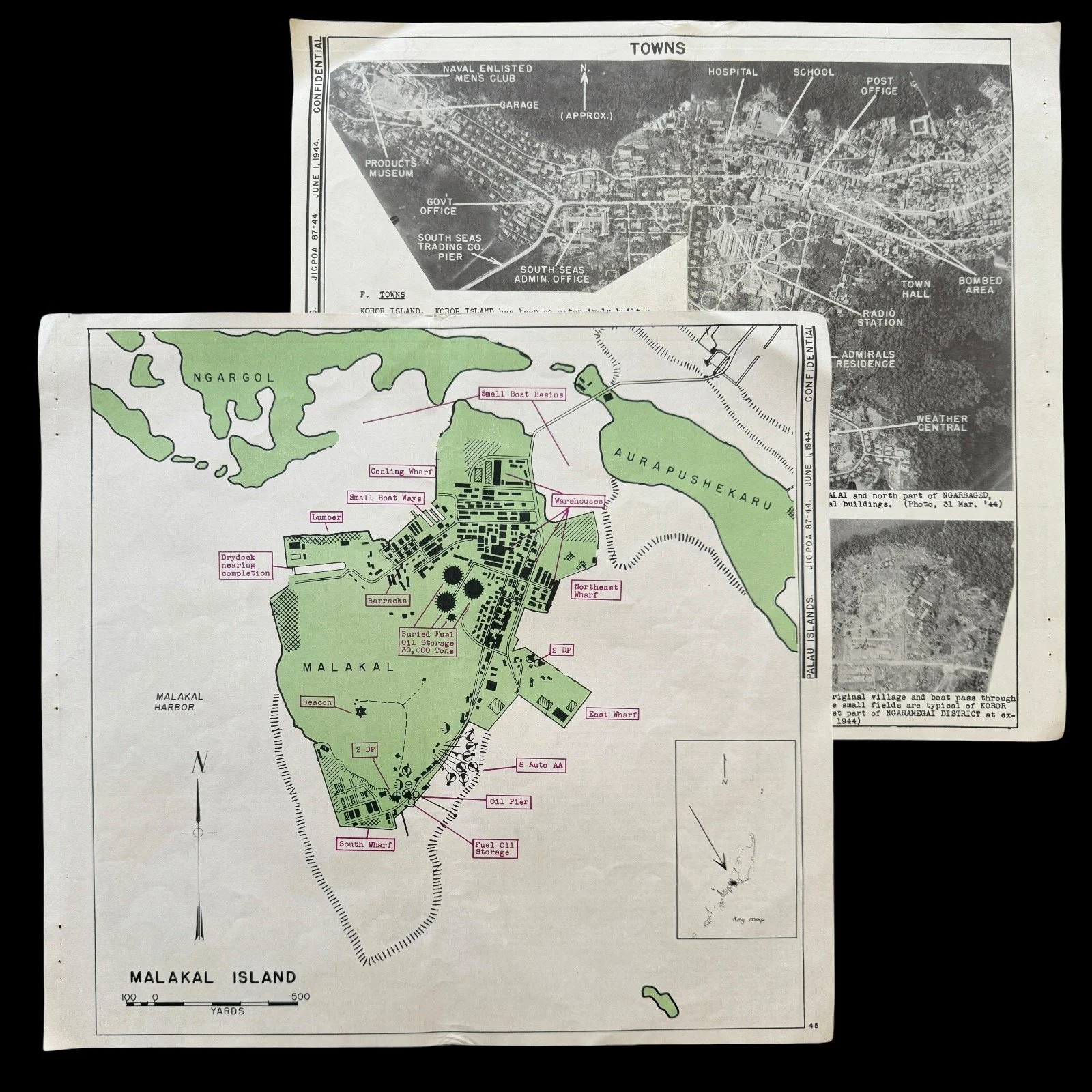

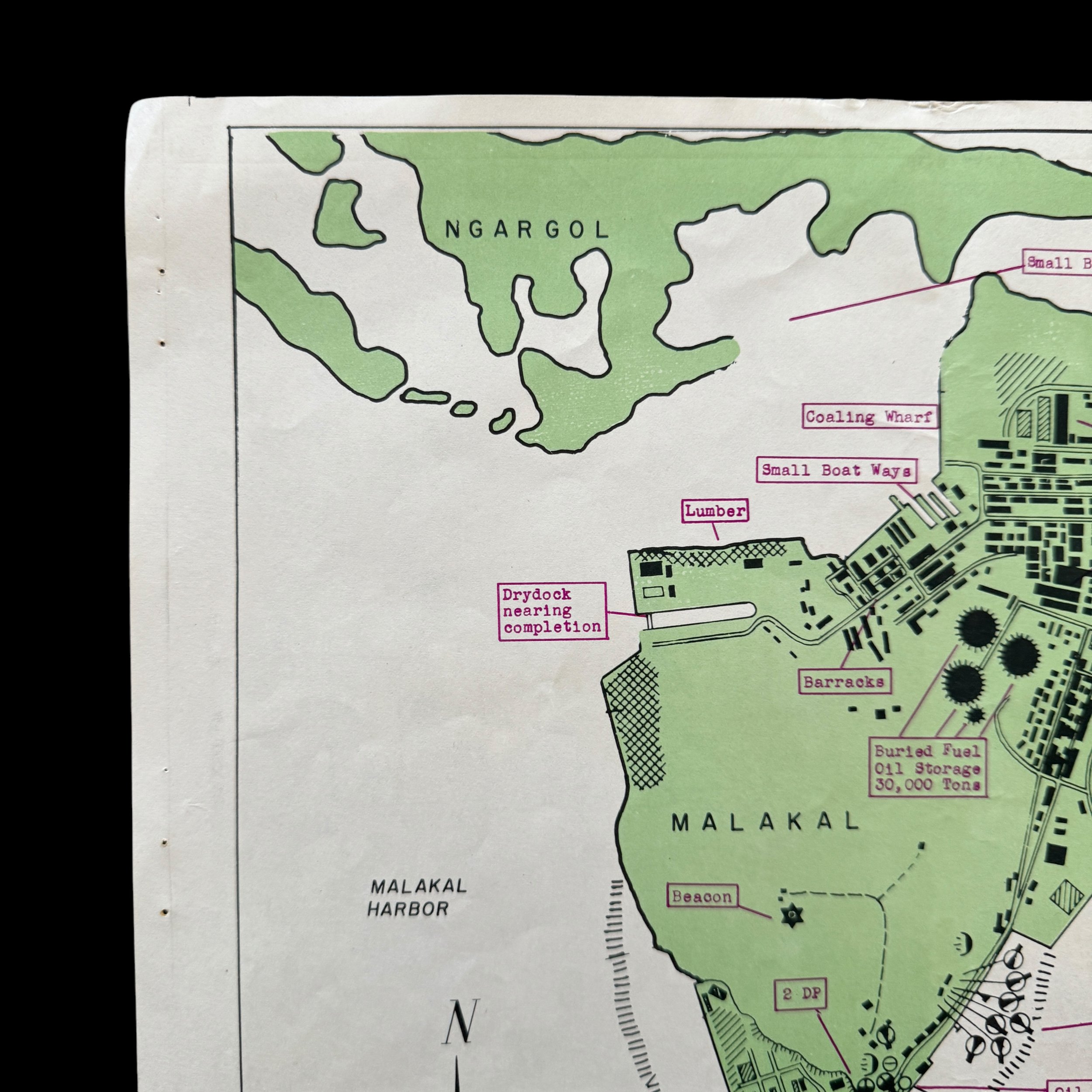
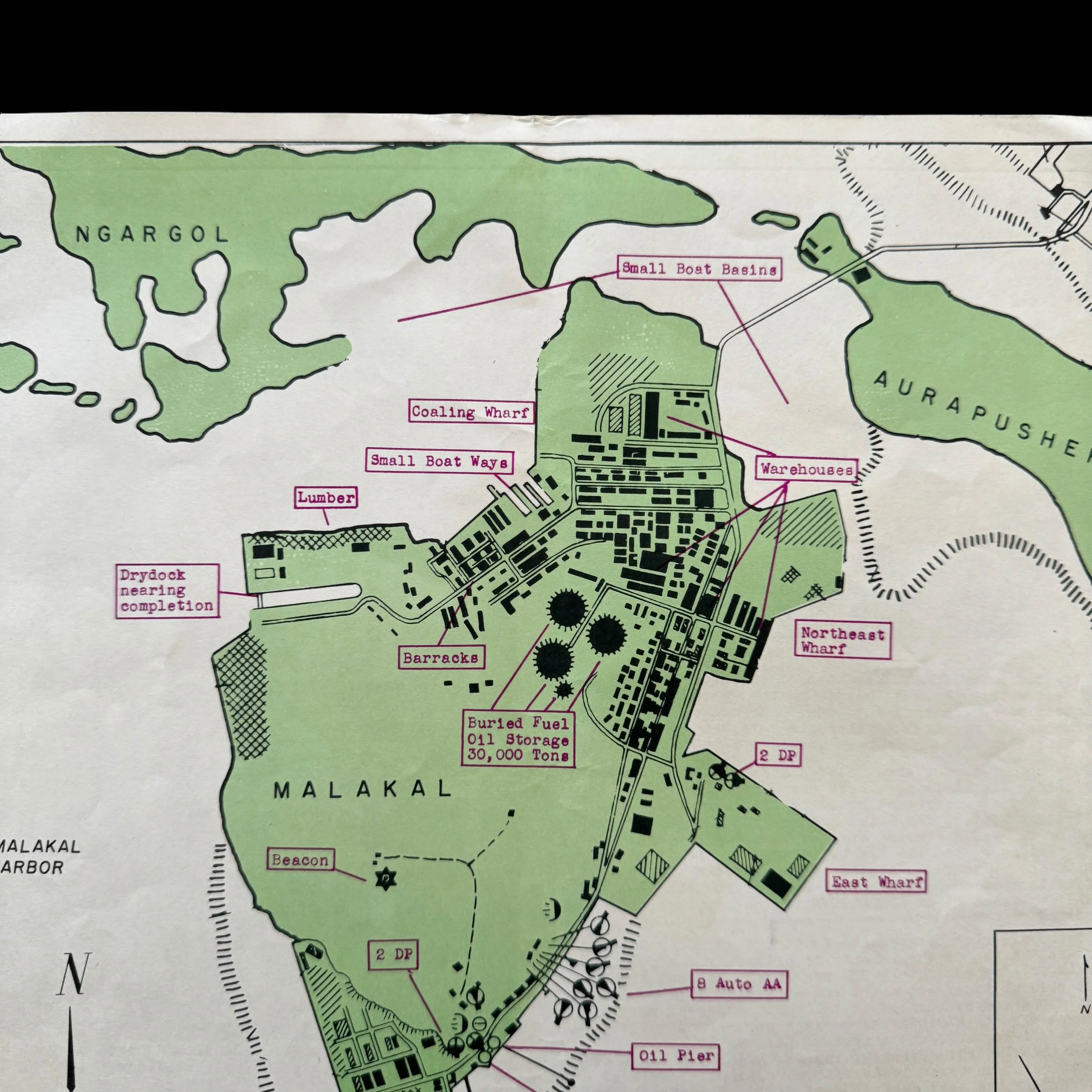
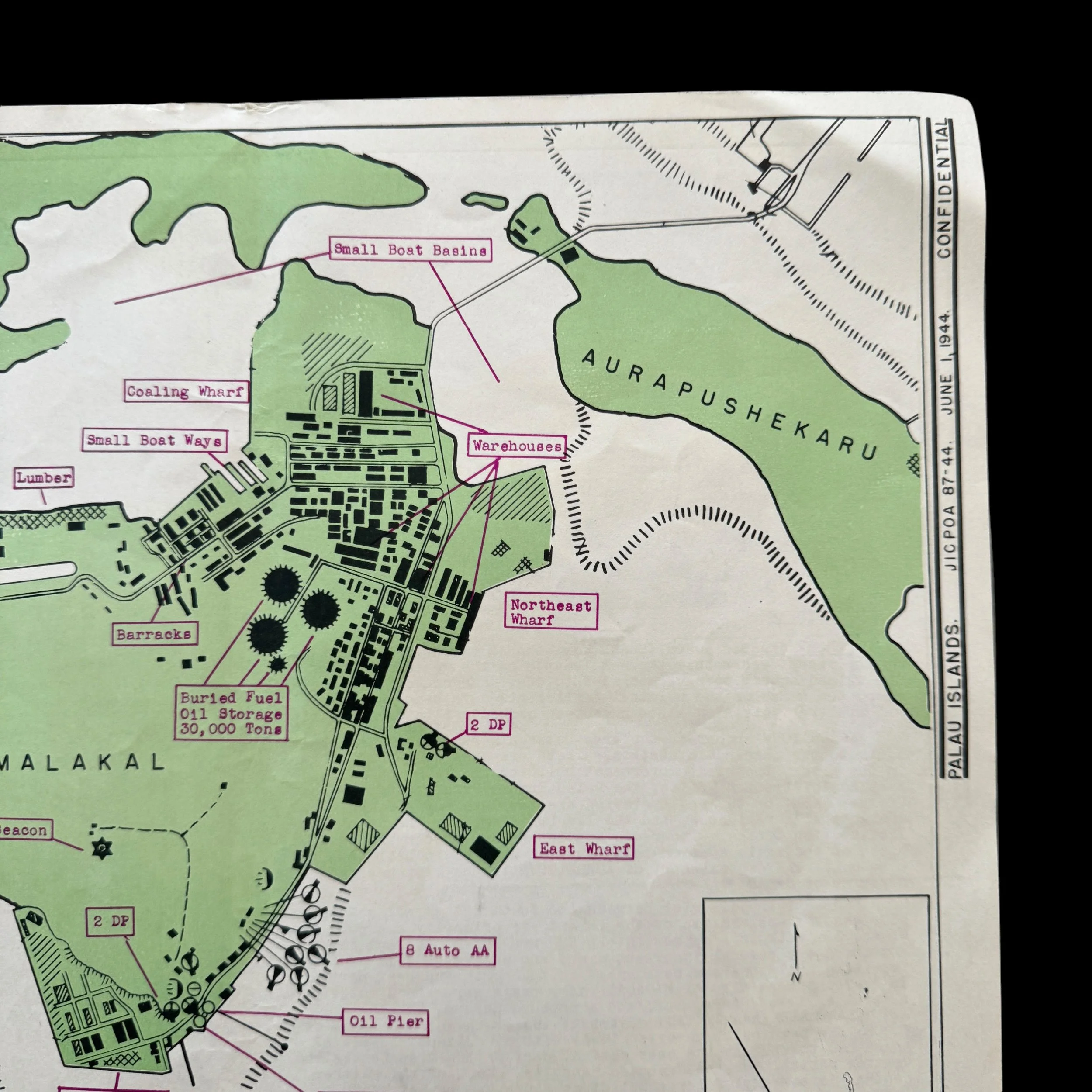
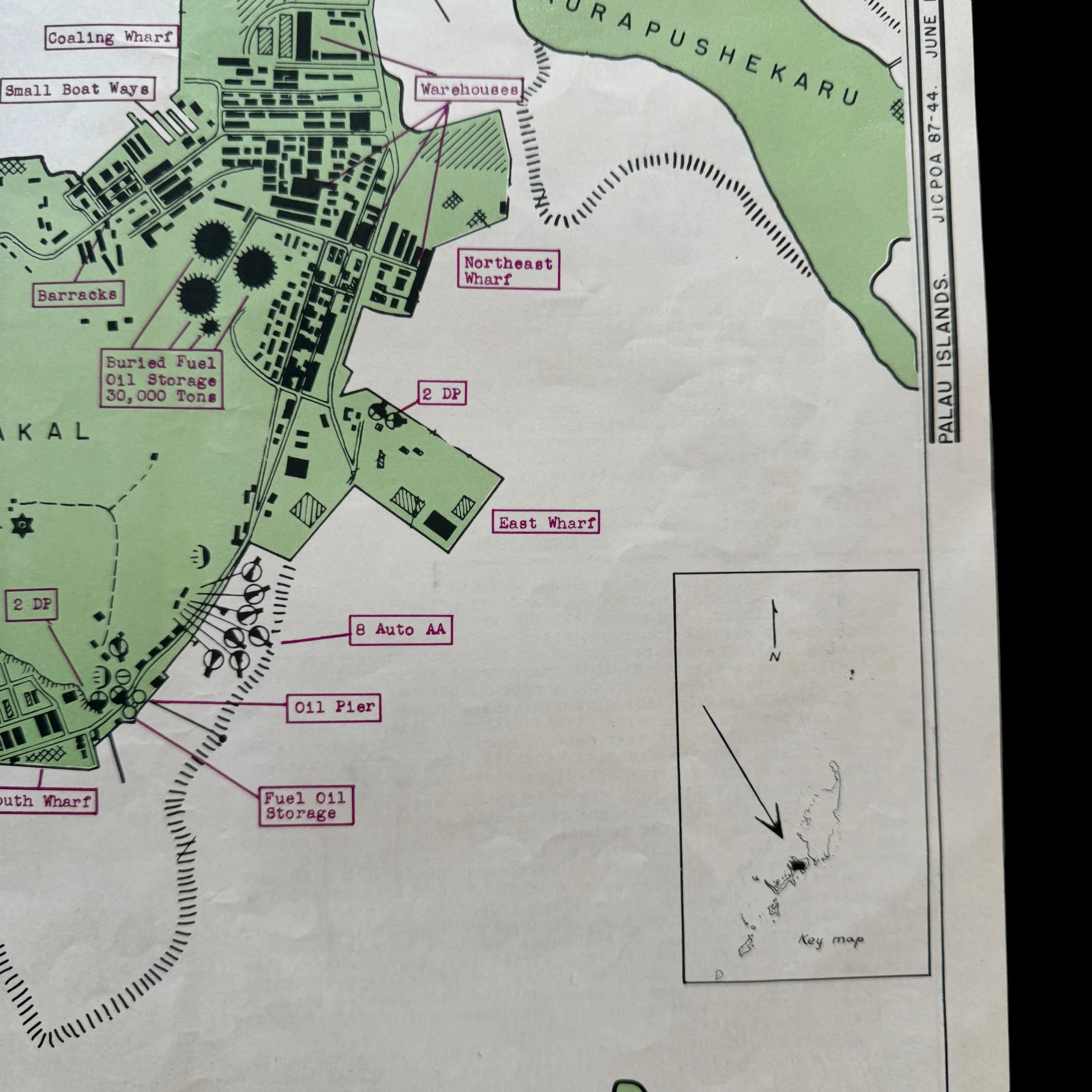
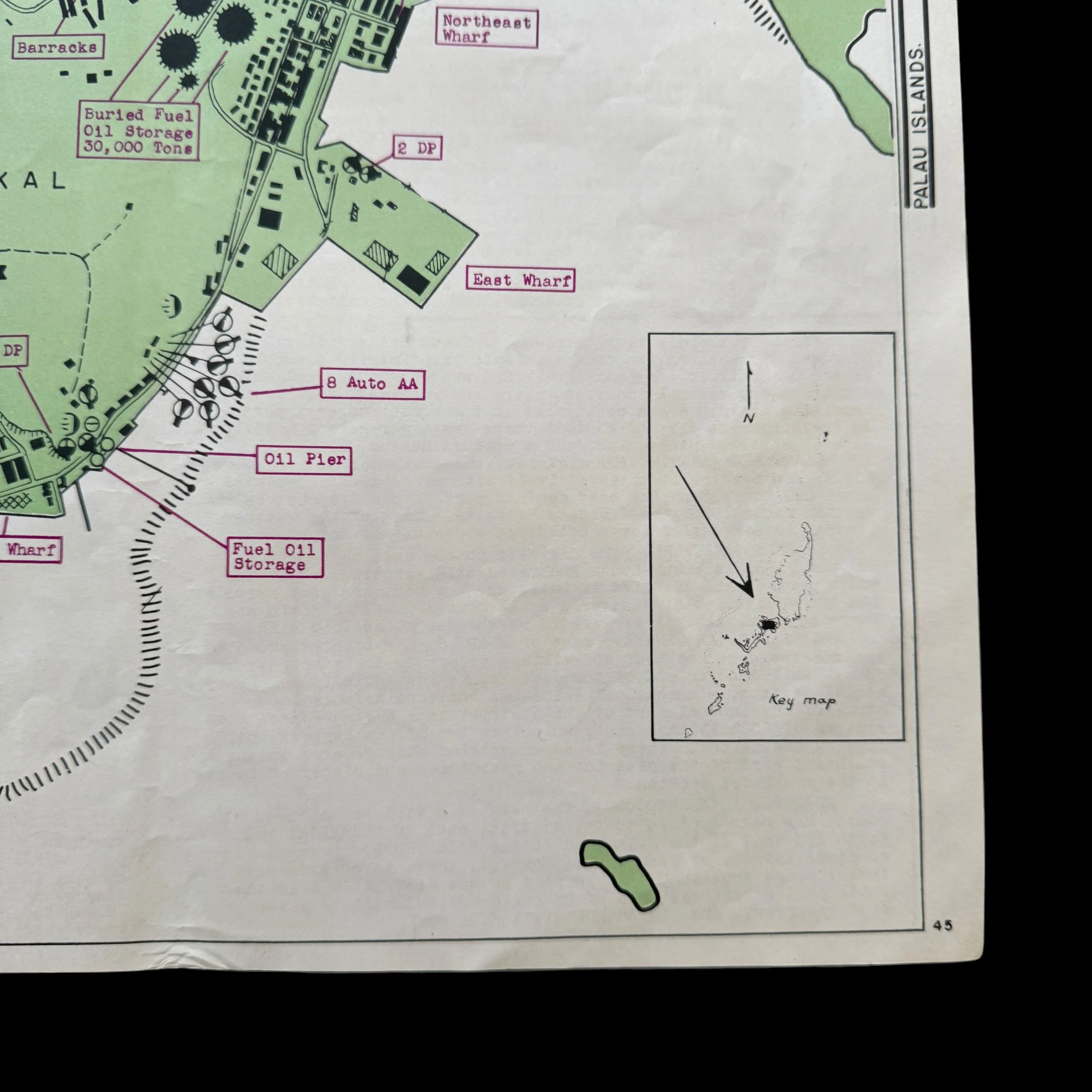

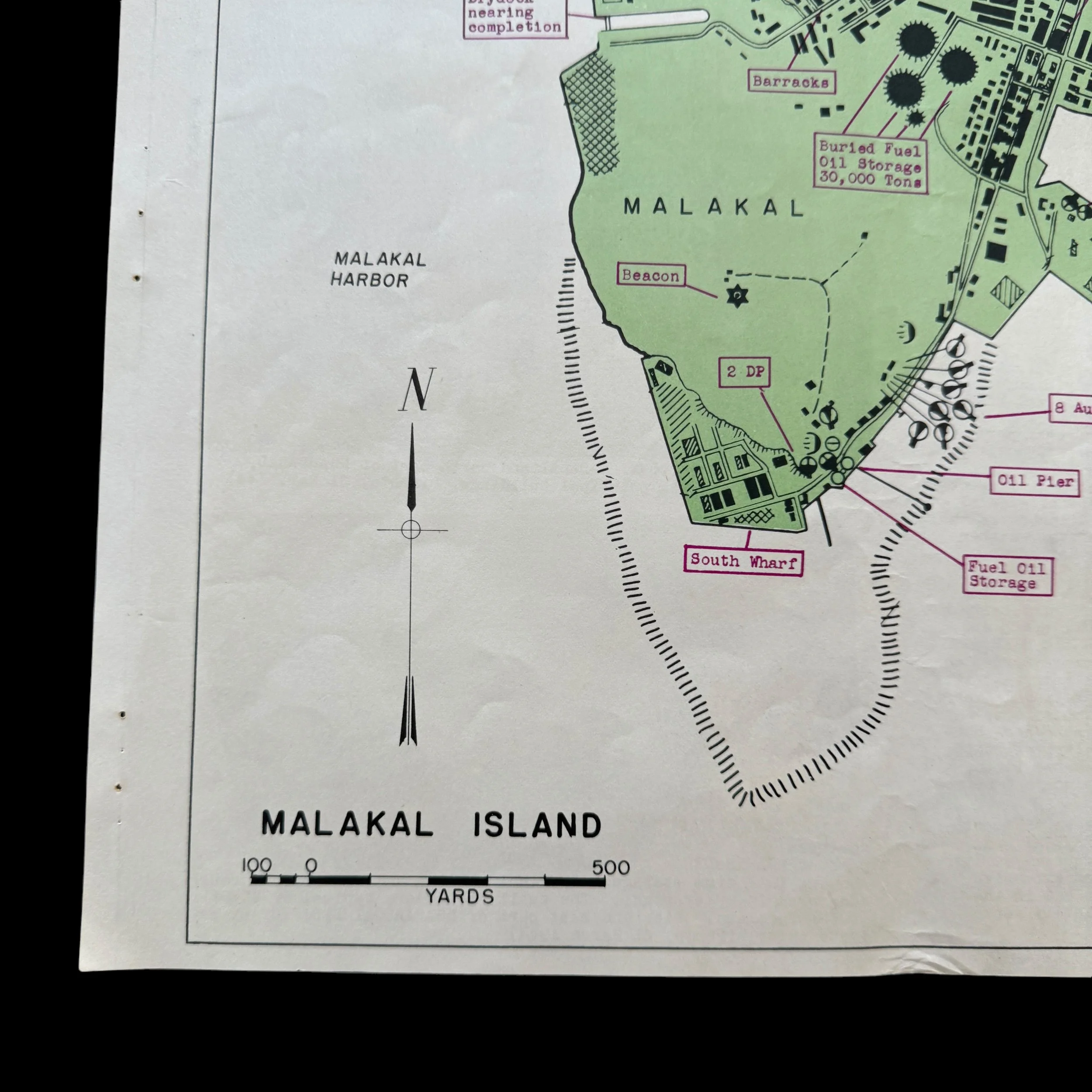

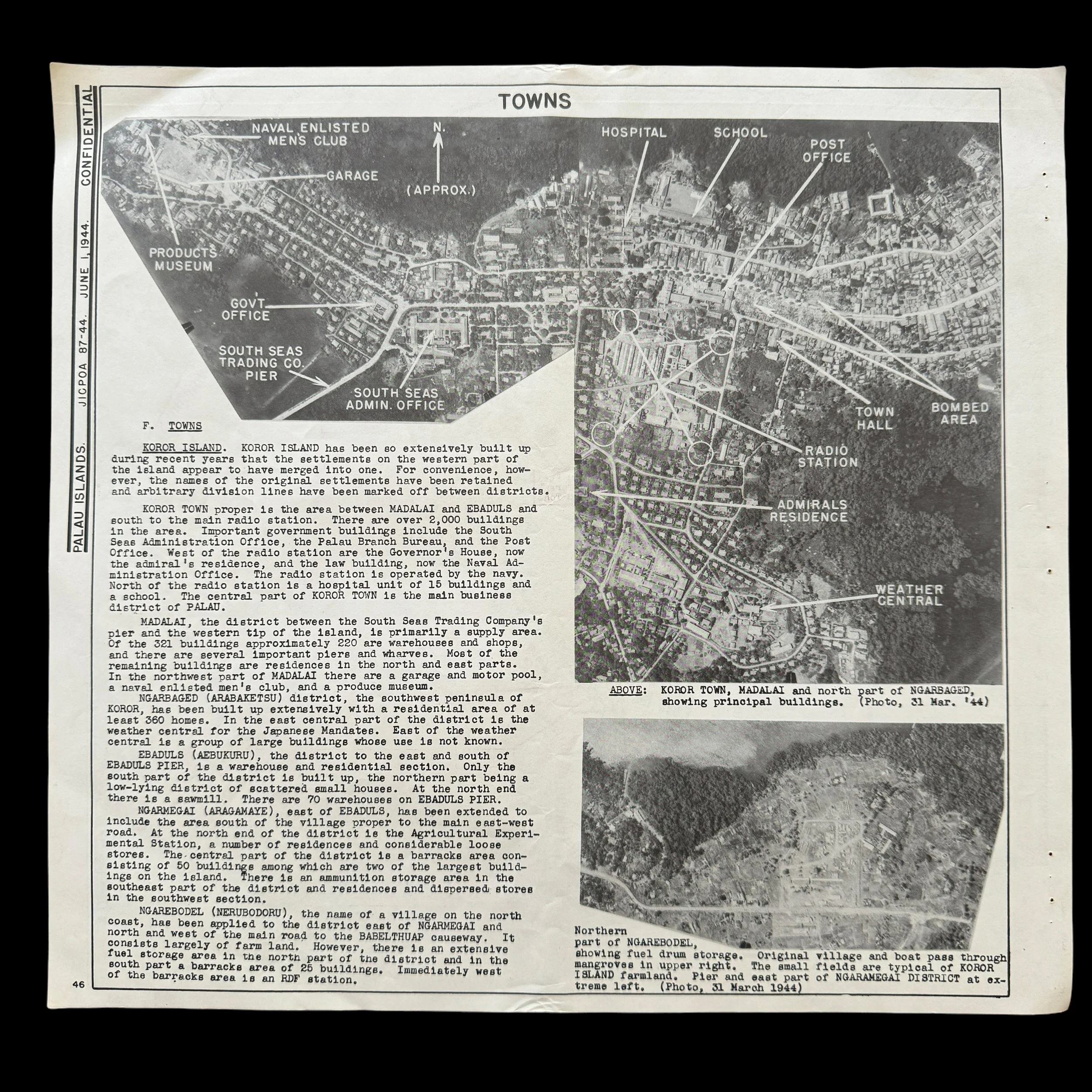
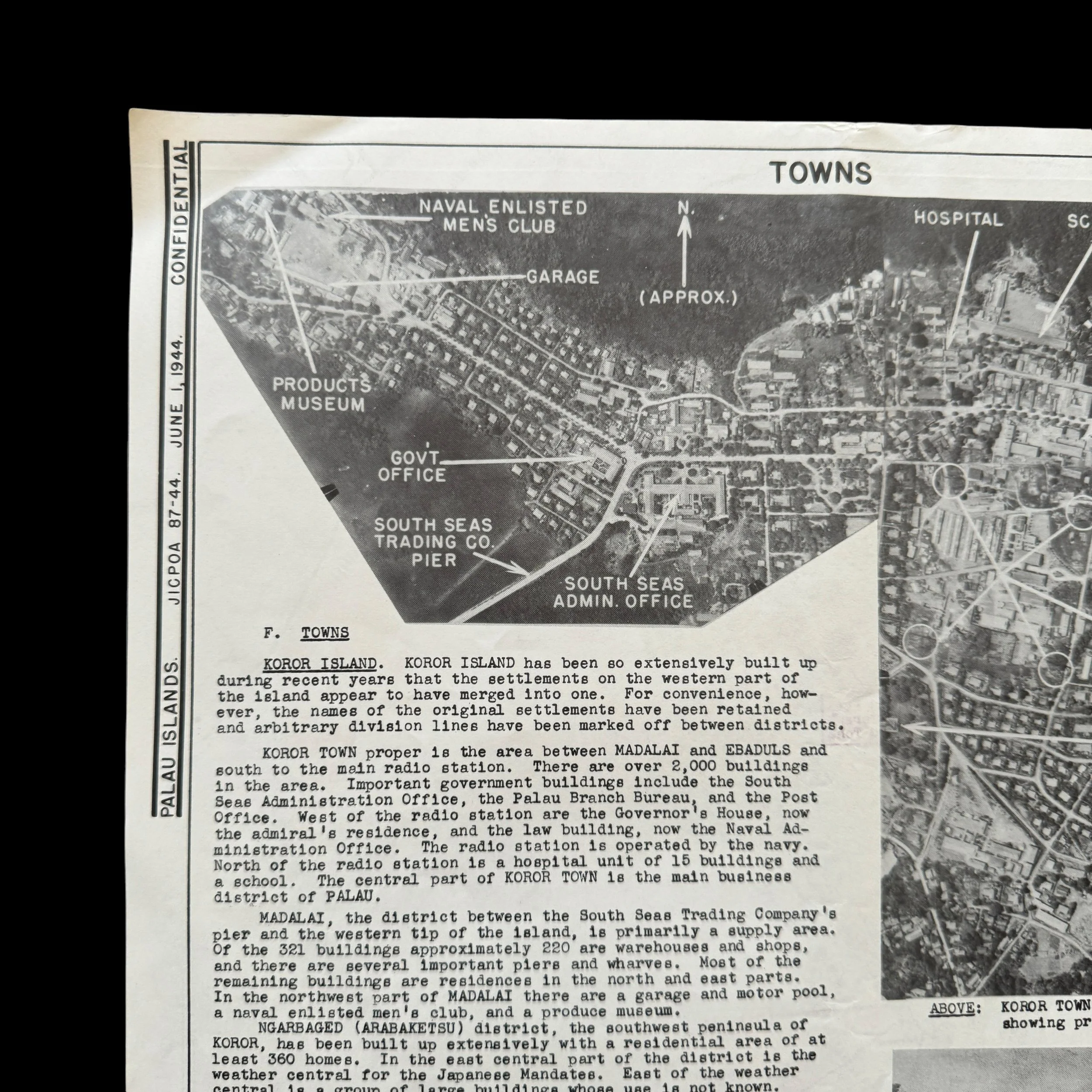
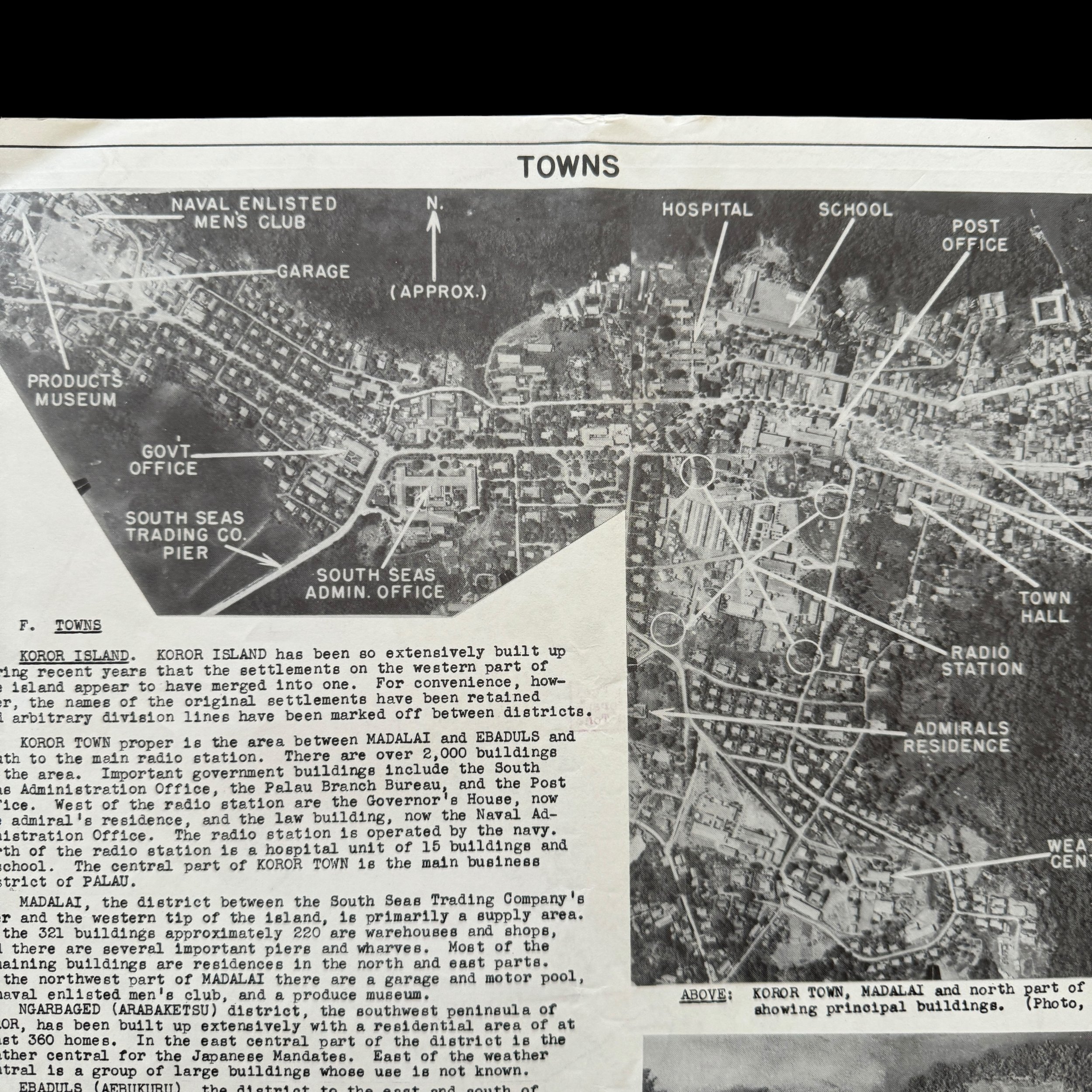
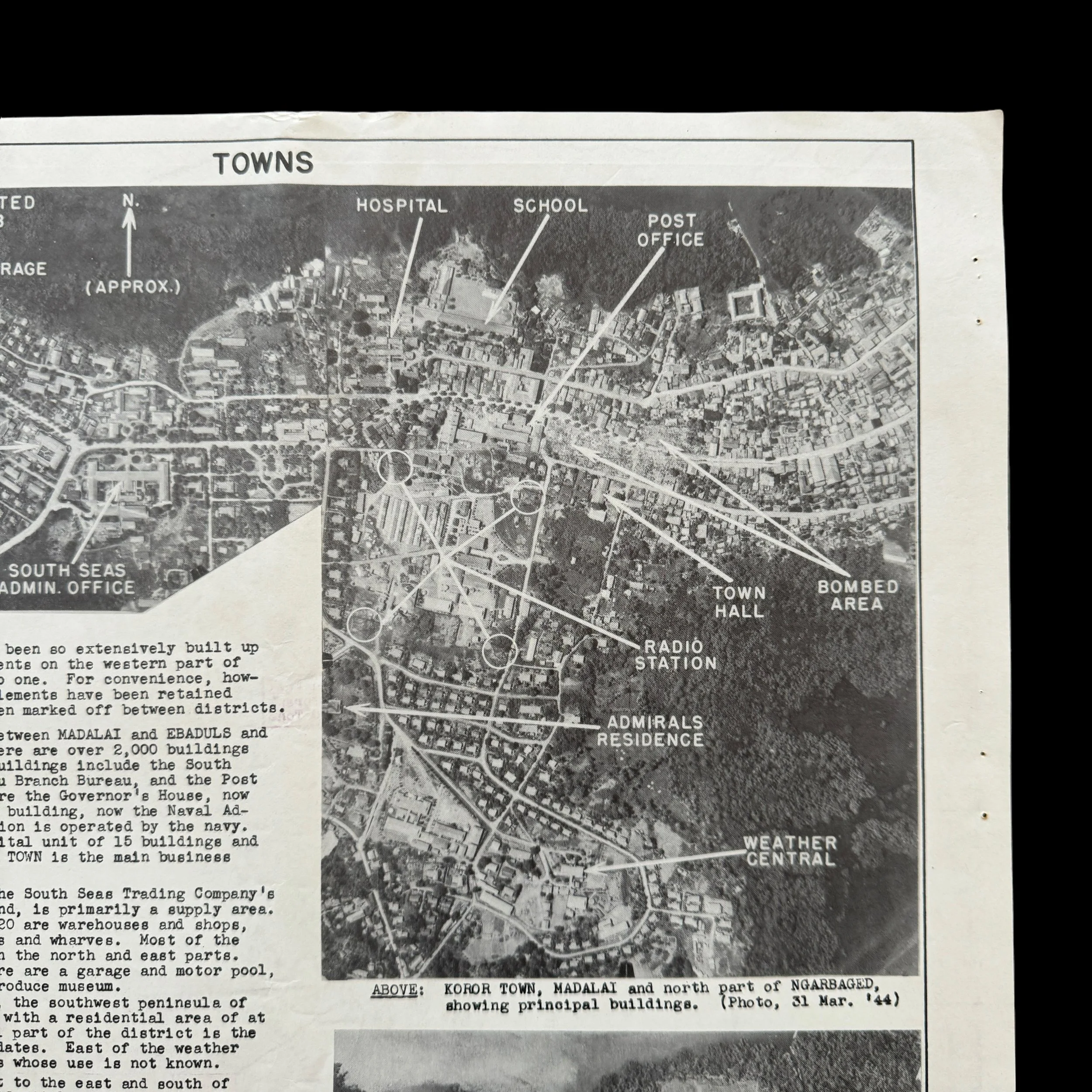

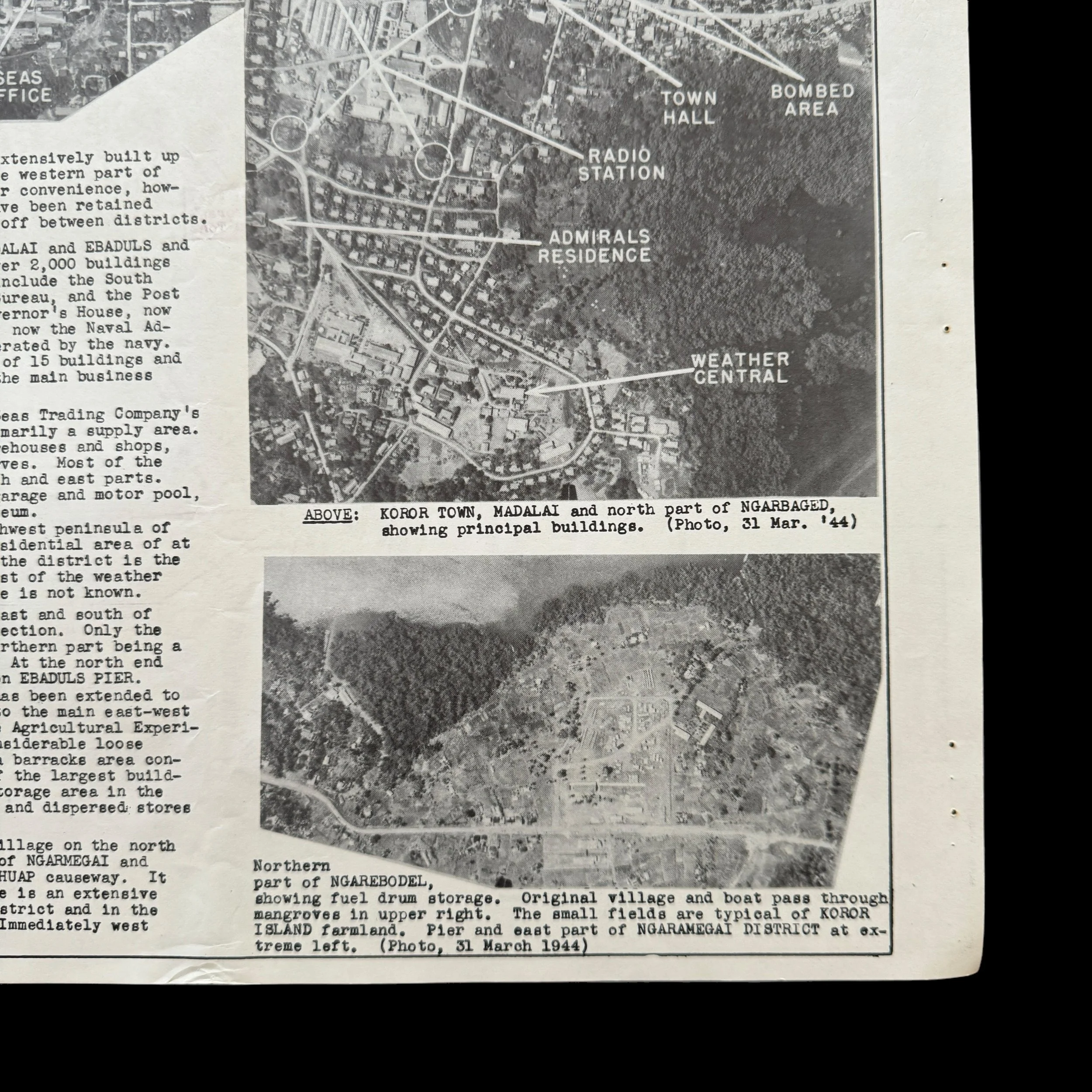
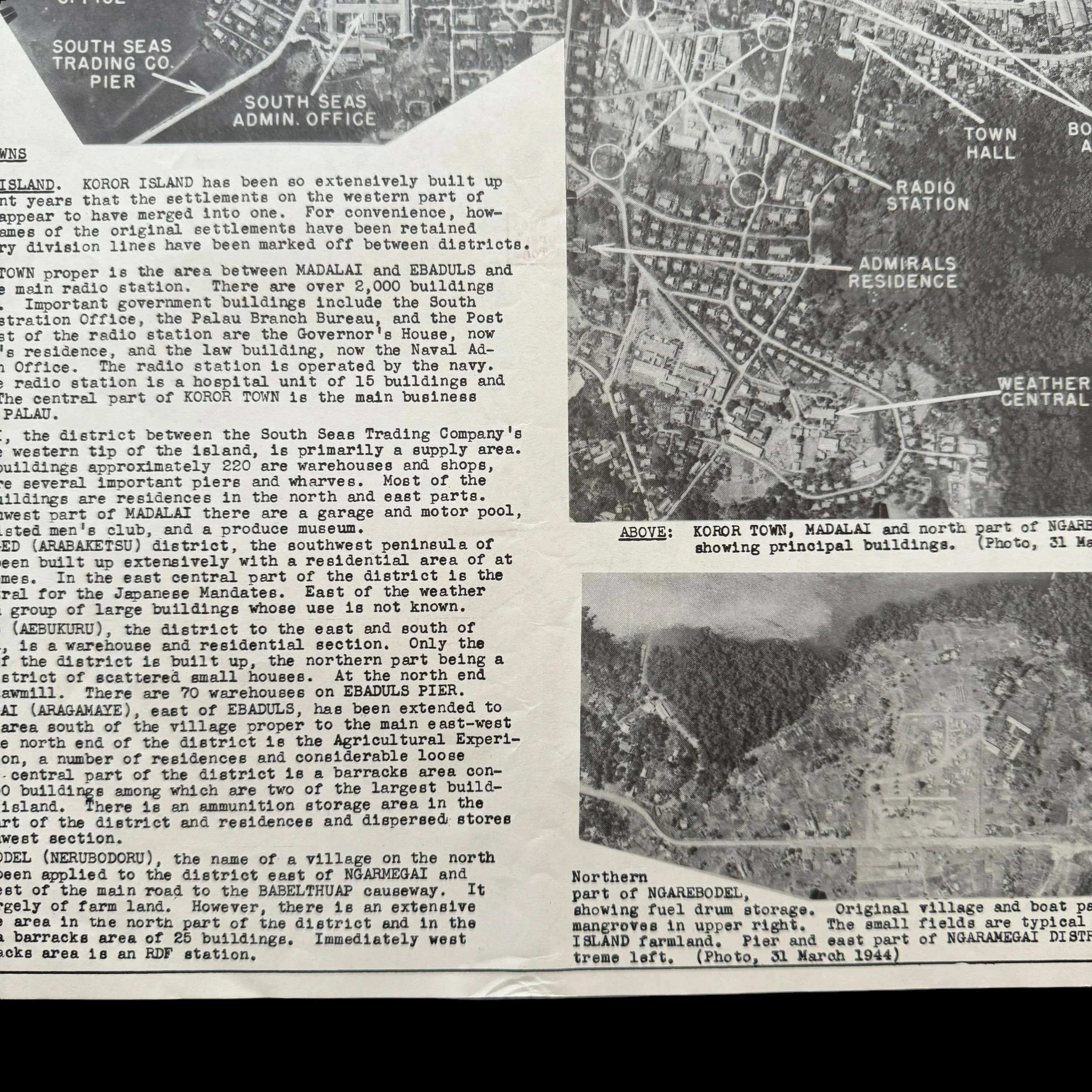
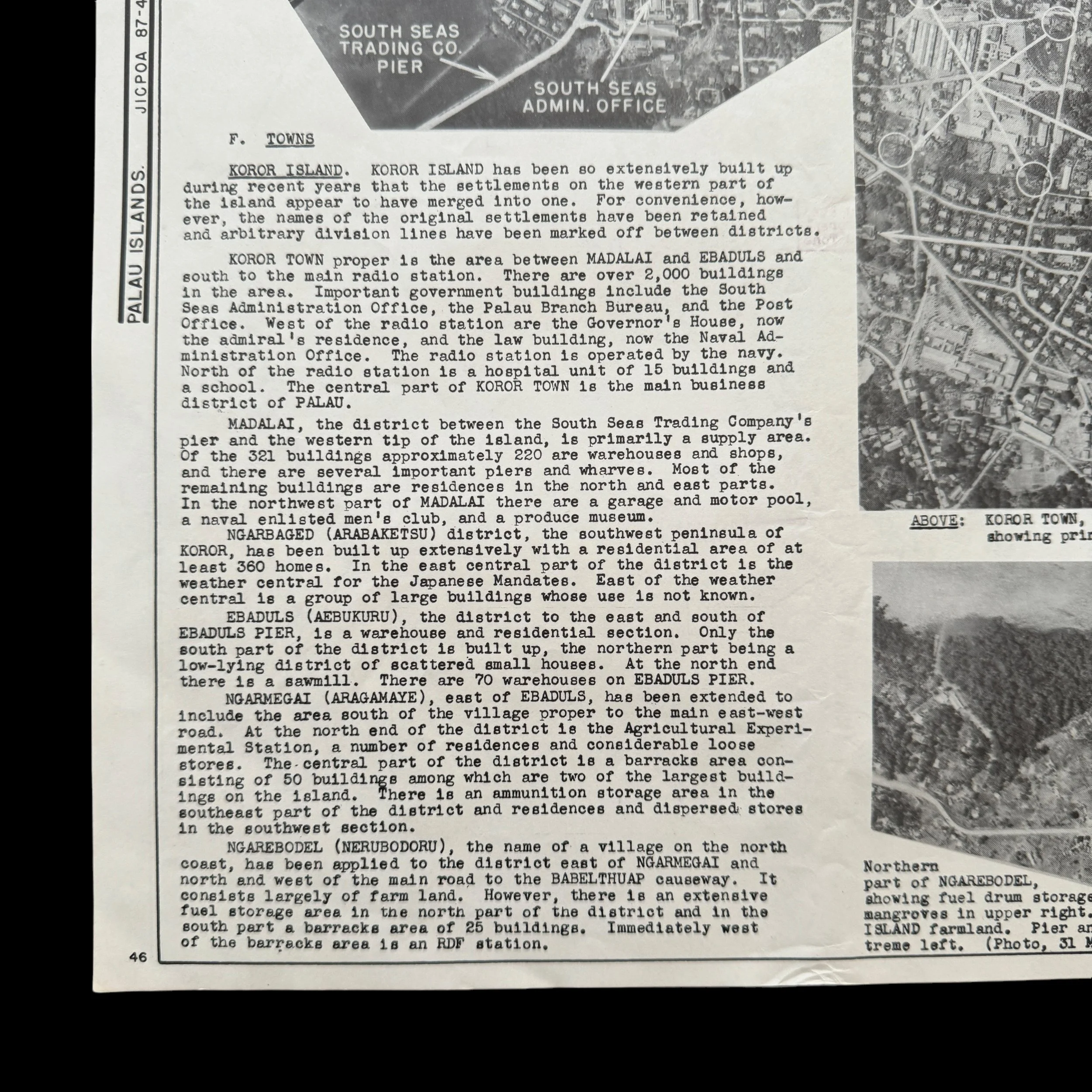

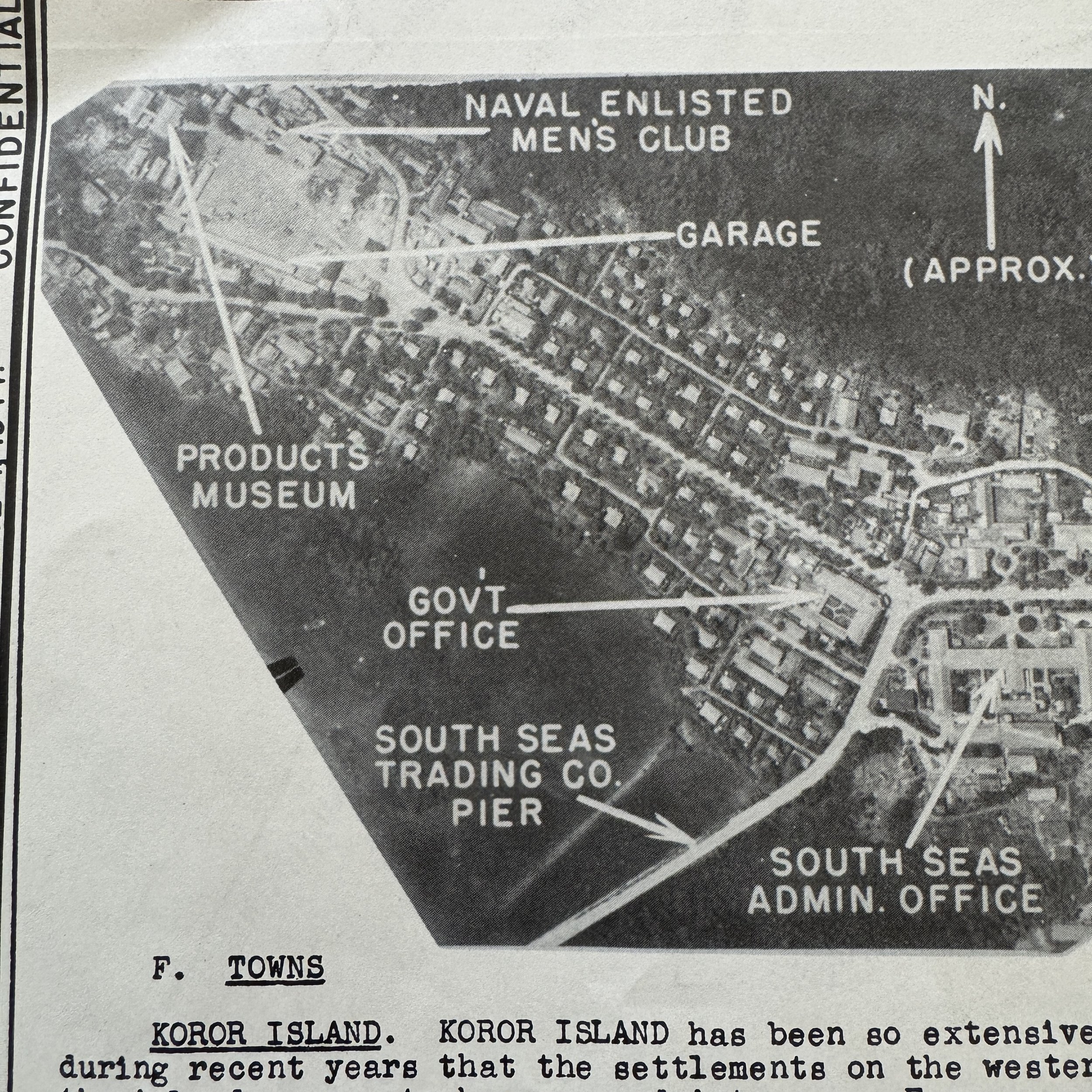
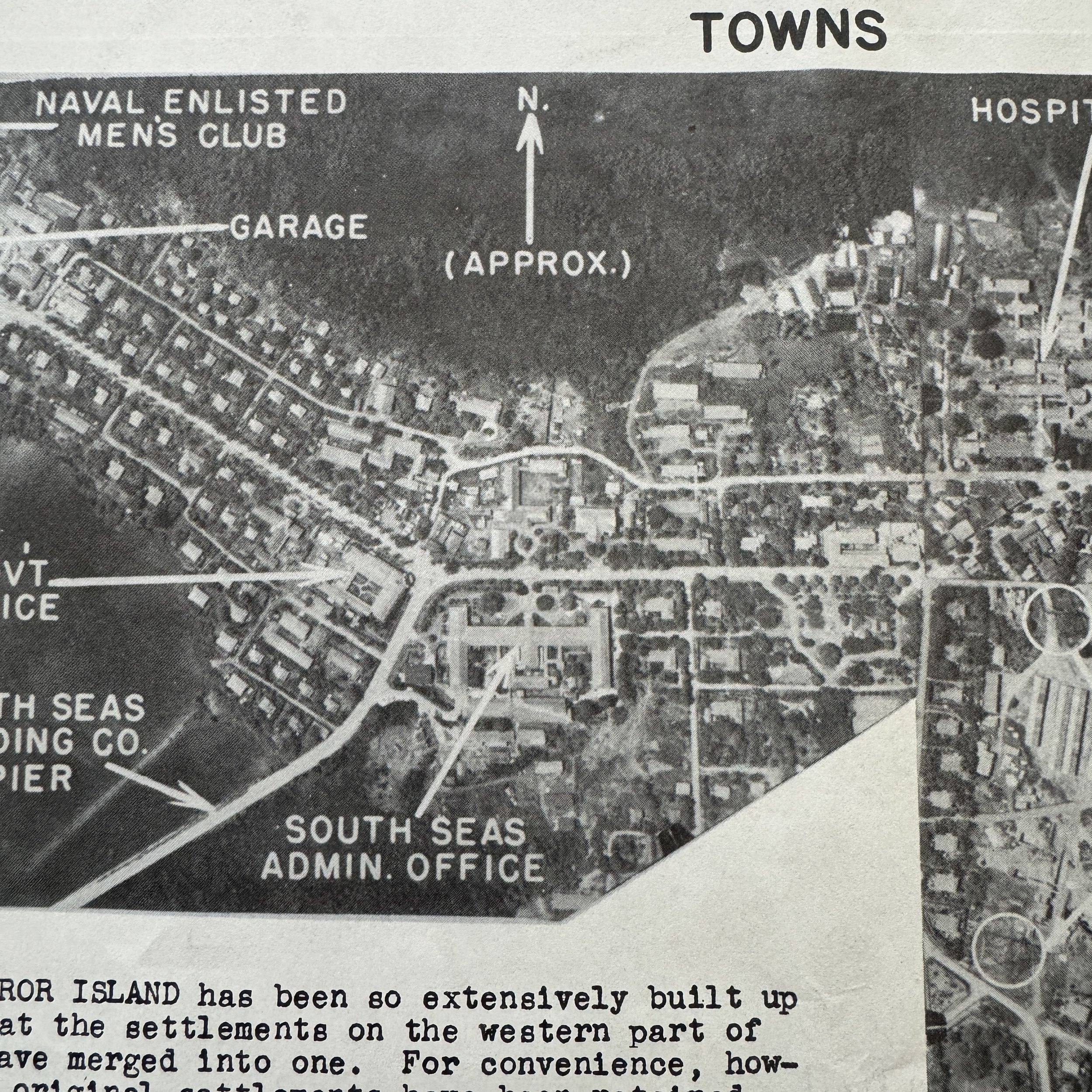
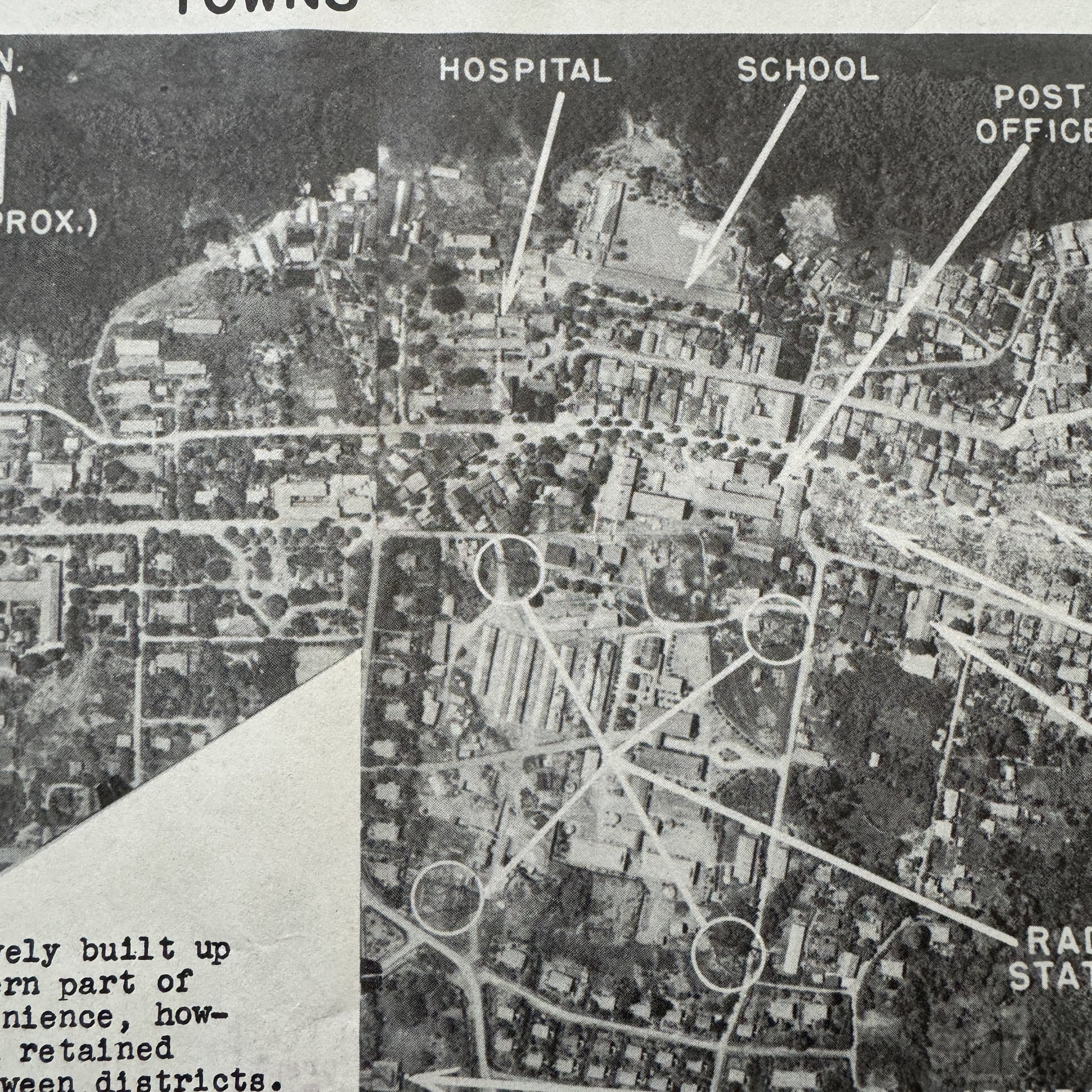
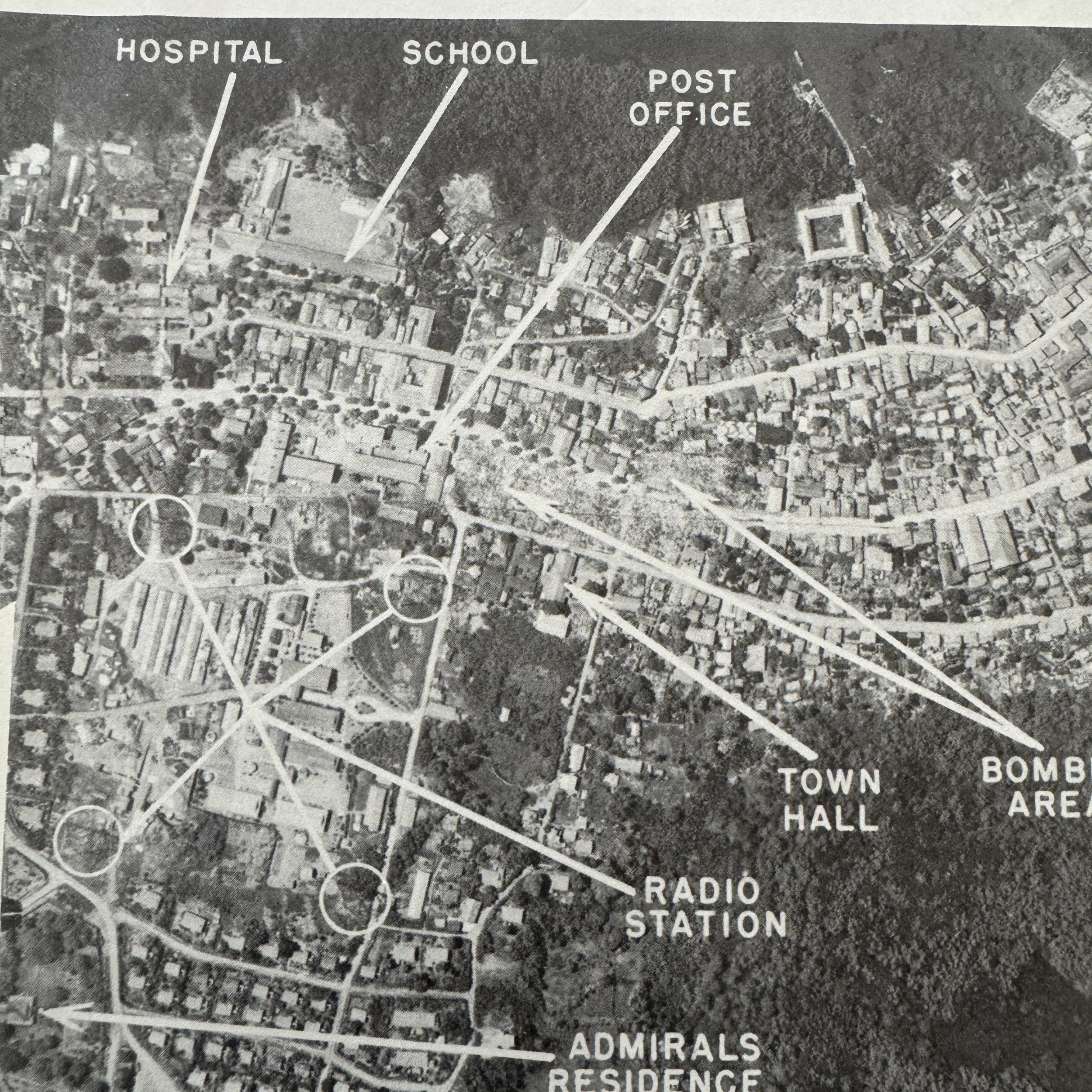
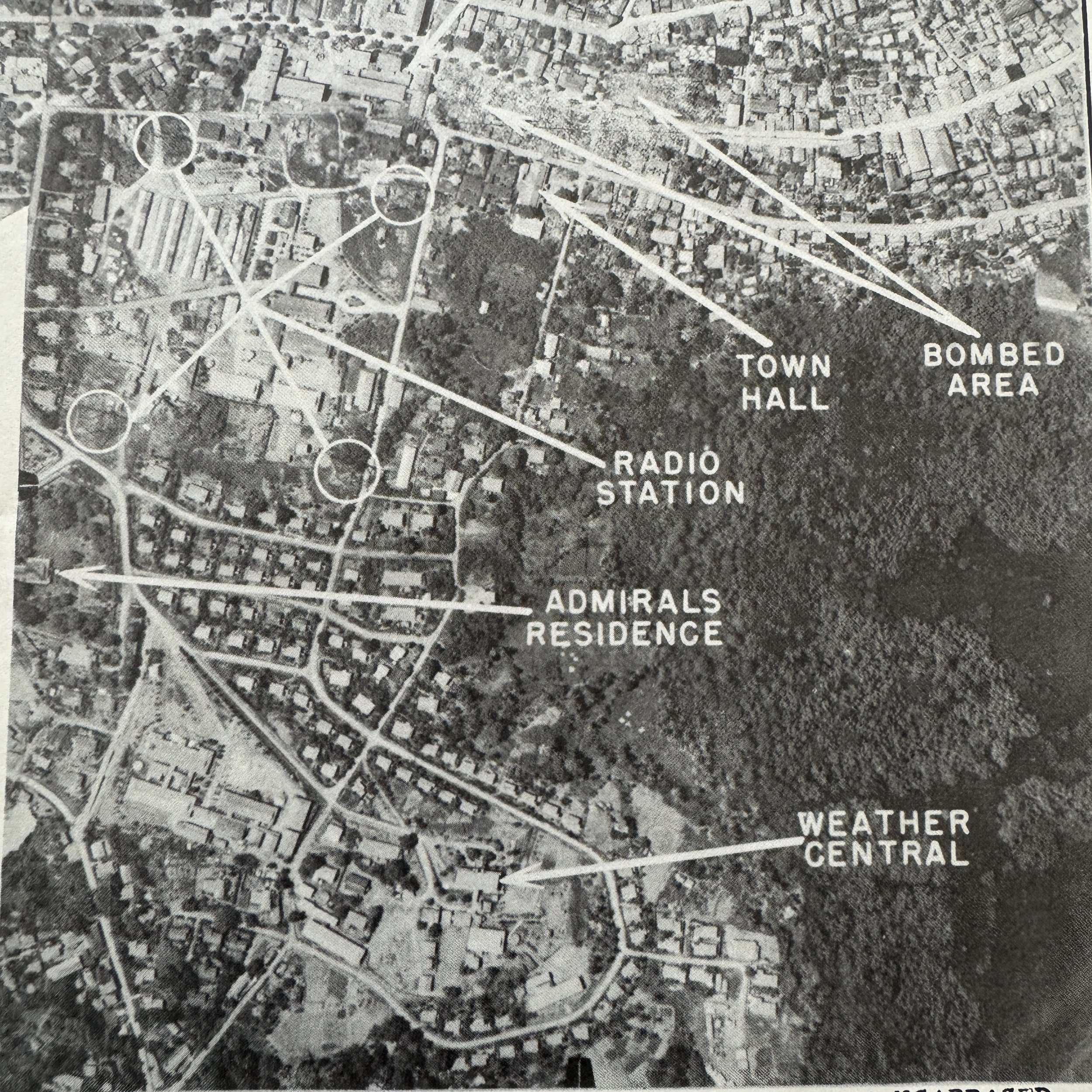

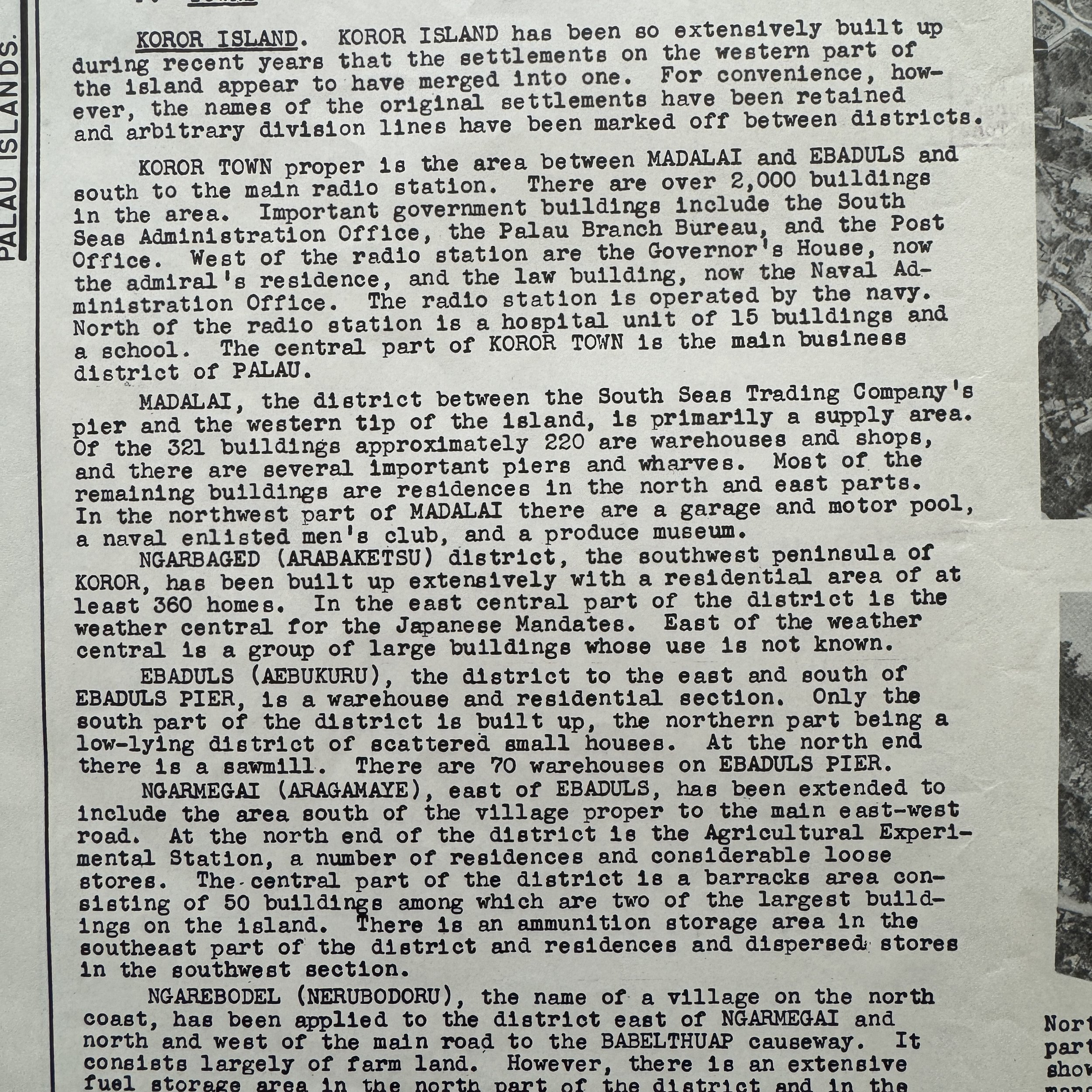
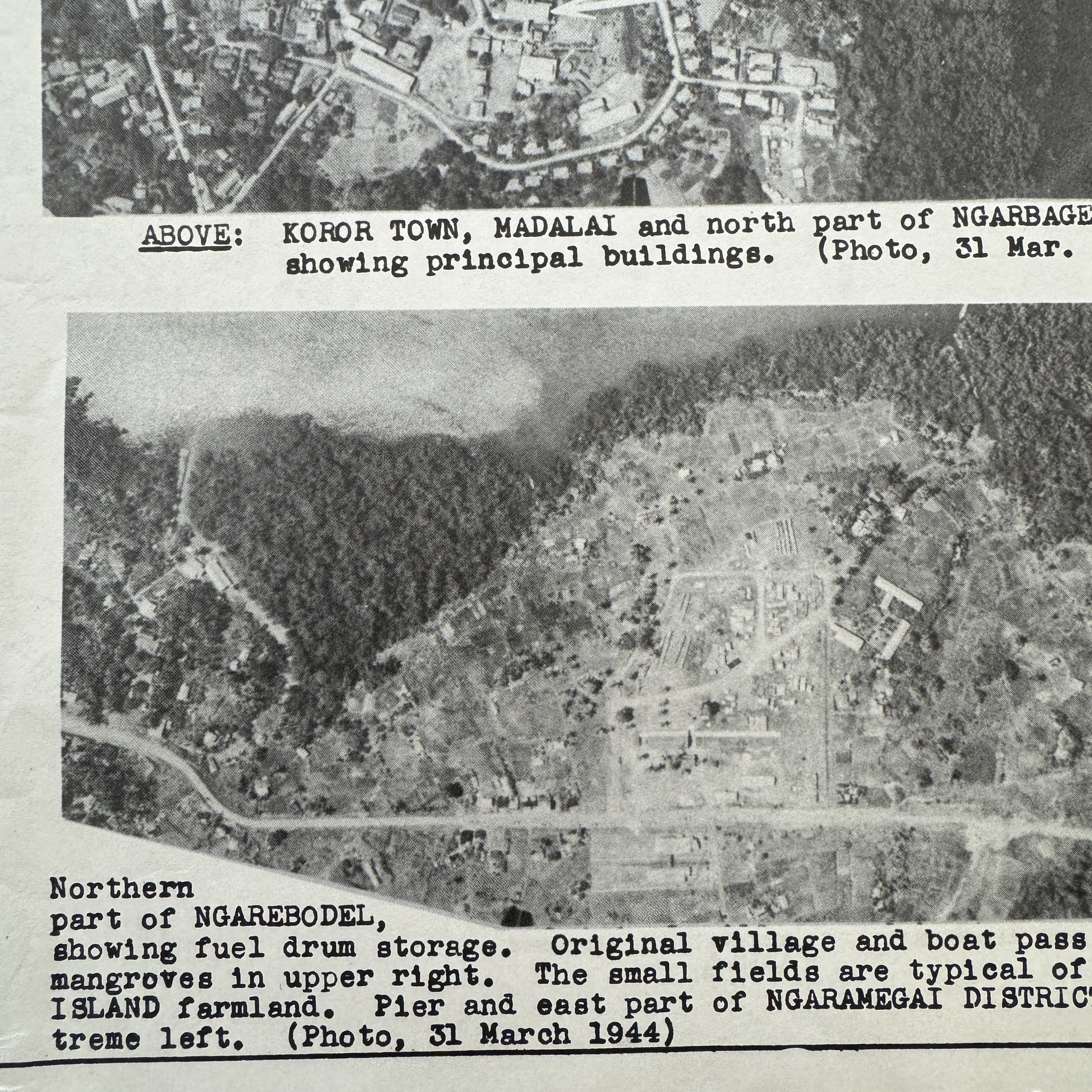
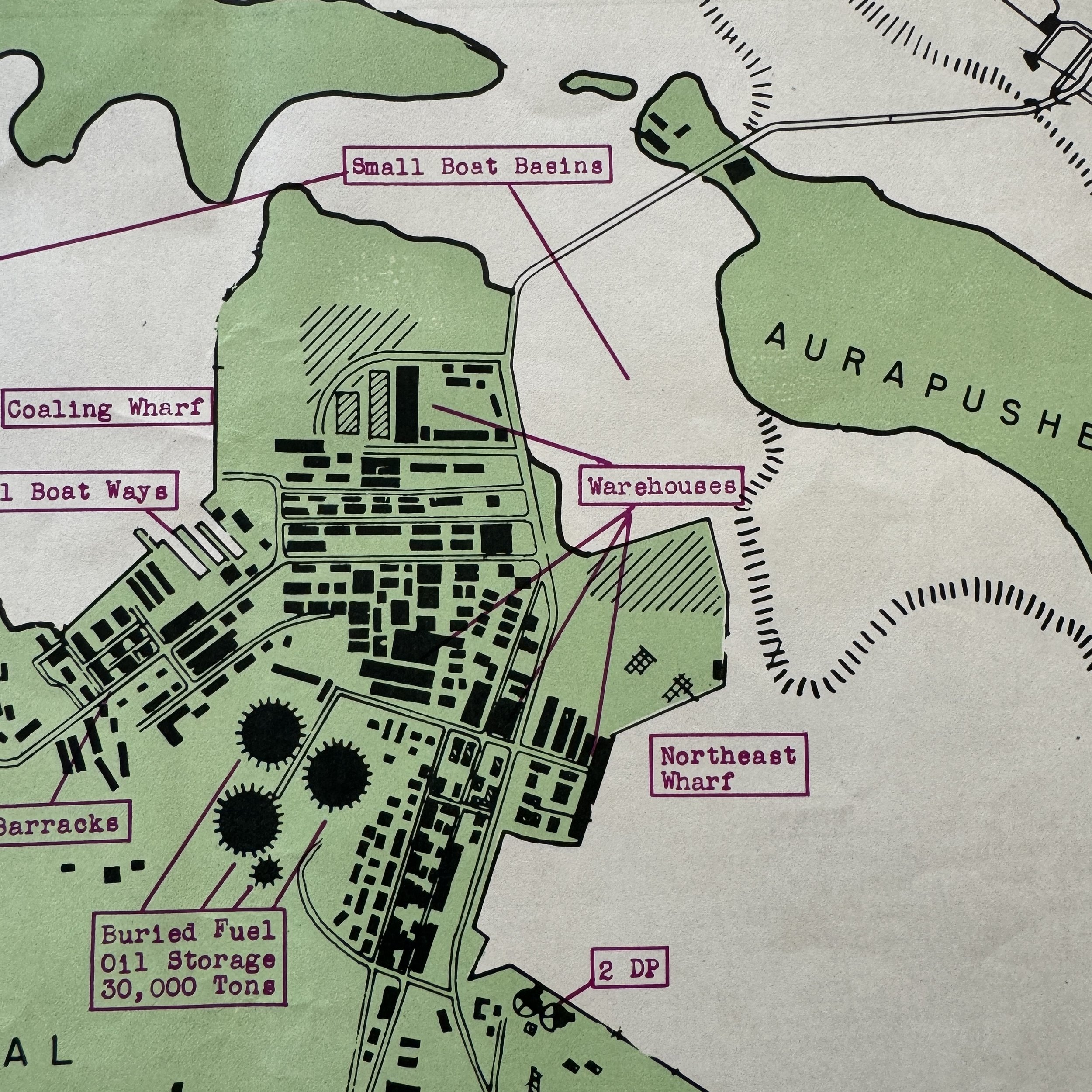
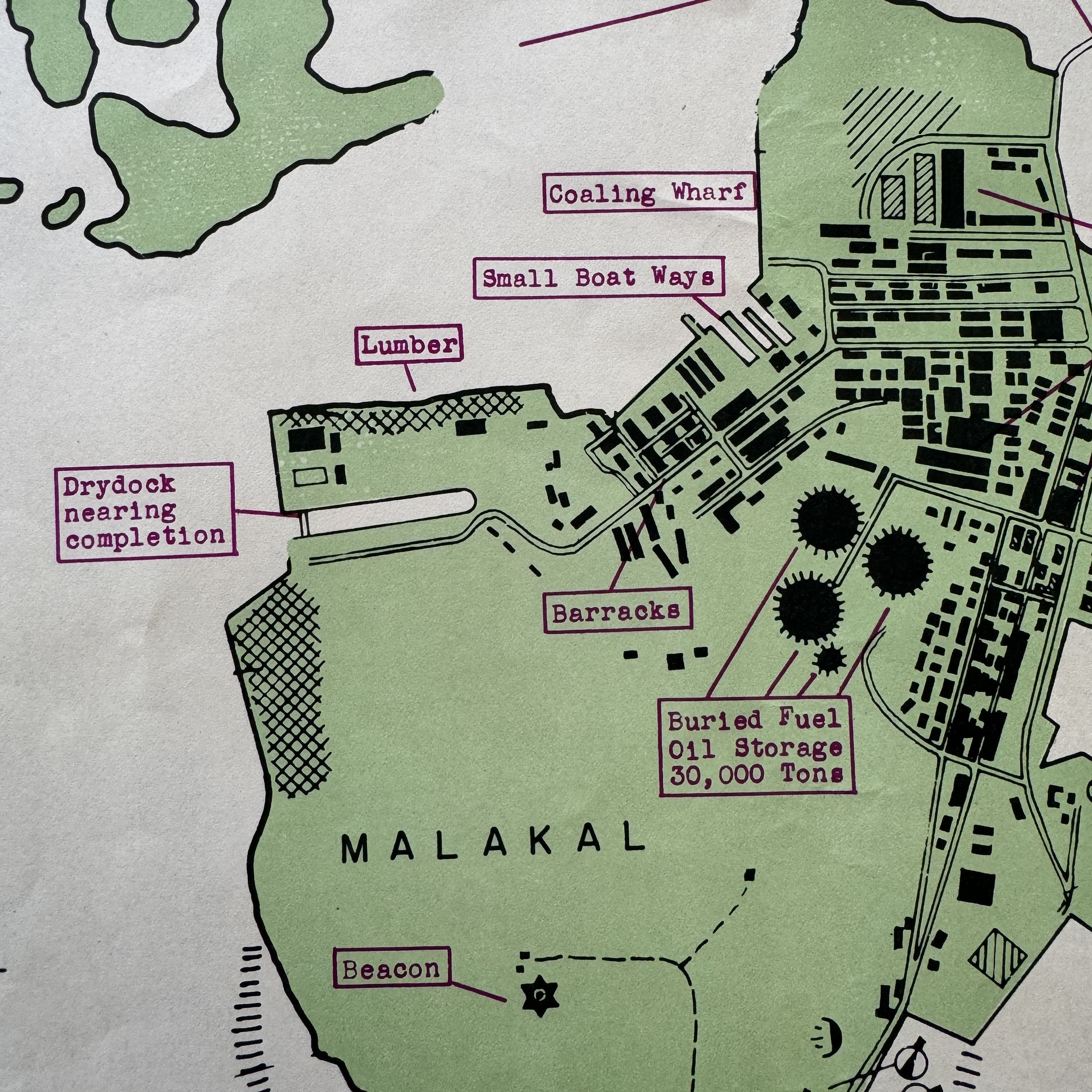
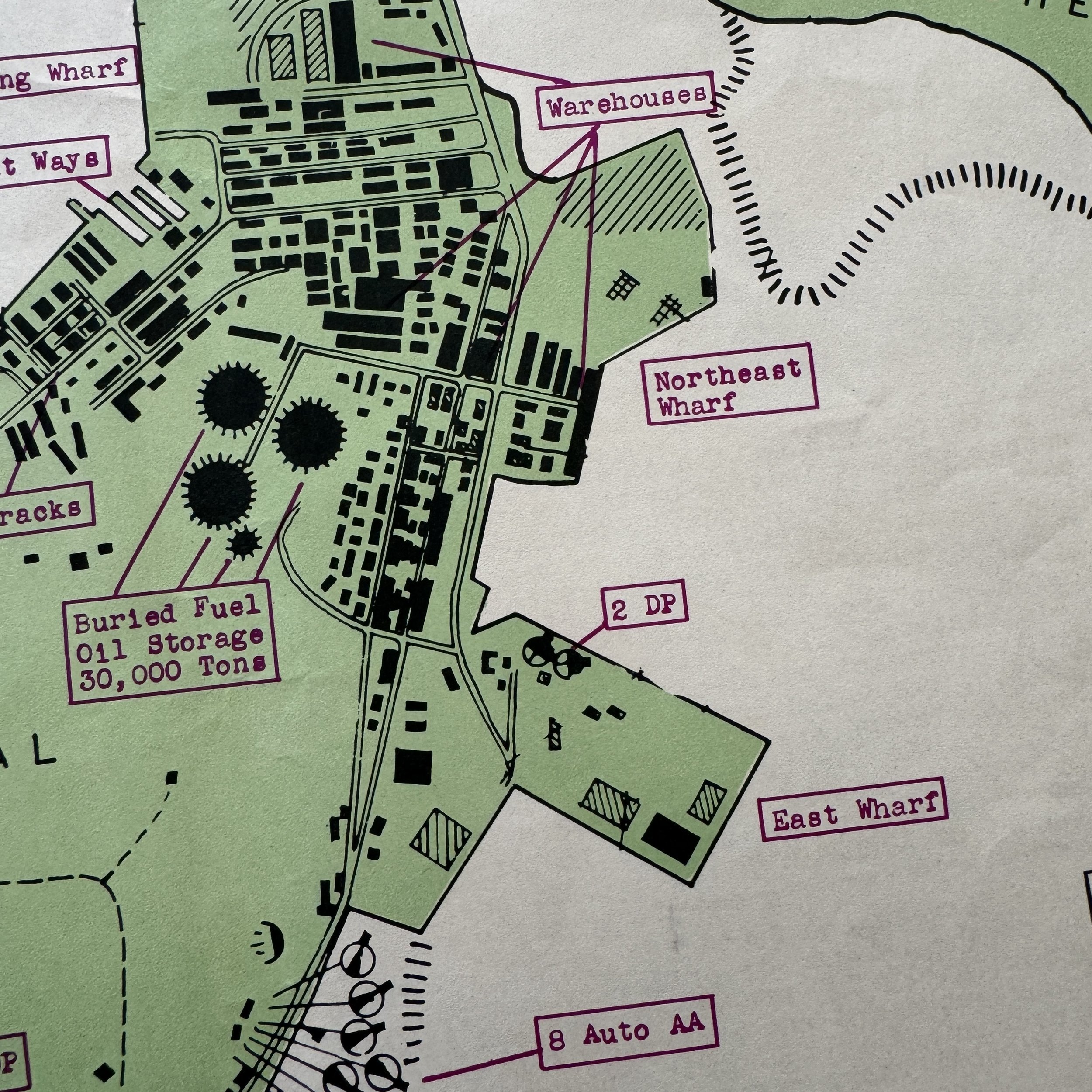
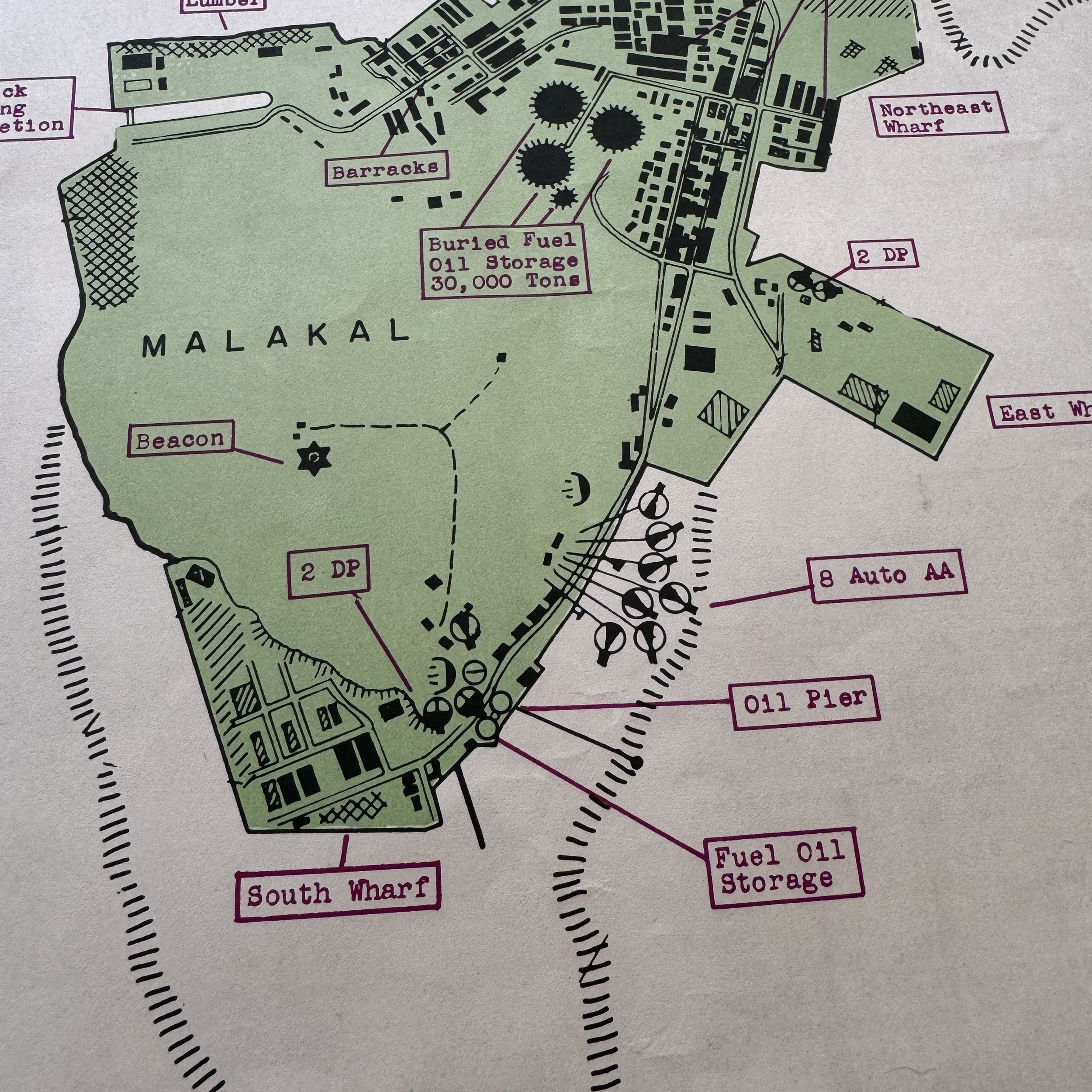


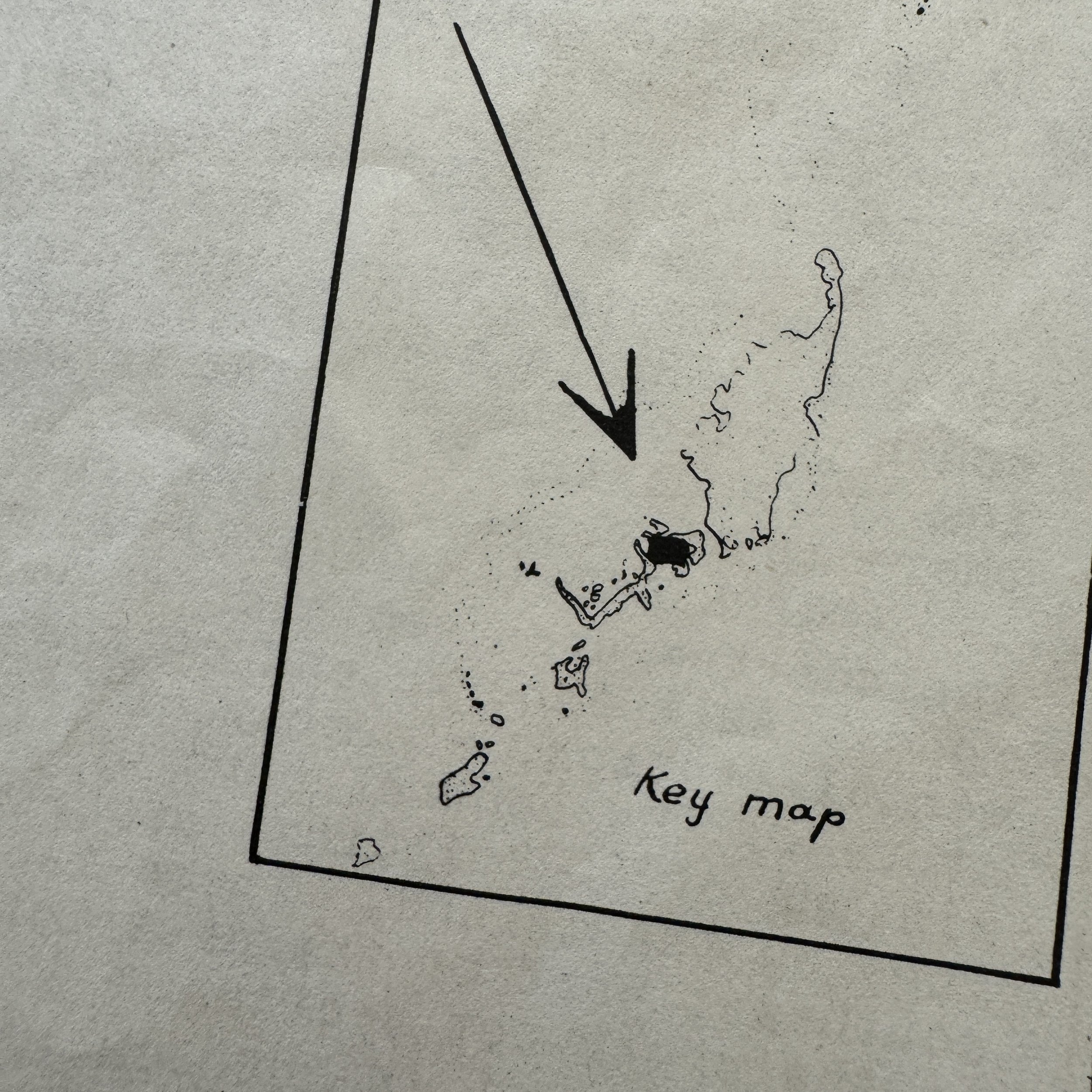
VERY RARE! WWII 1944 Operation Stalemate II - Palau Campaign (Malakal Island) CONFIDENTIAL Combat Intelligence Invasion Maps (Double-Sided)
Comes with a hand-signed C.O.A.
Size: 13 x 14 inches
This incredibly rare and museum-grade WWII artifact is an original World War II Operation Stalemate II CONFIDENTIAL marked combat intelligence invasion maps (double-sided).
As per military classification guidelines at the time, it states, “It is recommended that "Top Secret" material - Operation Plans and Orders - be reclassified downward to "Secret or Confidential" prior to the start of an operation by a sufficient length of time to permit of adequate and timely distribution to commanders and officers and concerned. Only when in that area of combat theater can maps, reports, and plans be re-classified as “Restricted” to be used in combat and in the field.”
Dated June 1944 (3 months prior to the D-Day invasion of the Palua Islands) this map was a part of the largest amphibious operation in the Pacific to date, with more than 1,600 ships and craft and more than 800 aircraft deployed.
The Joint Intelligence Center Pacific Ocean Areas (JICPOA) played a pivotal role in producing military intelligence during World War II, particularly in the Pacific Theater. Established in 1943 under the command of Admiral Chester Nimitz, JICPOA was tasked with gathering, analyzing, and disseminating intelligence across the vast Pacific Ocean Area, covering millions of square miles of ocean and land. JICPOA’s multi-branch organization combined resources from the U.S. Army, Navy, Marine Corps, and other intelligence units, making it a hub for coordinated intelligence operations during the war.
One of JICPOA’s most significant contributions during WWII was in the preparation for amphibious assaults, such as the Battle of Peleliu in the Palau Islands, part of the larger Operation Stalemate II in 1944. JICPOA was responsible for producing detailed intelligence maps that were critical for the U.S. military's planning and execution of the invasion. These maps were created from aerial reconnaissance, submarine patrols, and photo interpretation, and they provided precise topographical details, enemy troop positions, and the layout of defensive installations, including the extensive cave networks that Japanese forces used for fortification.
For the Battle of Peleliu, JICPOA’s intelligence maps informed U.S. commanders about the island’s challenging terrain, fortifications, radio systems and more giving the U.S. forces a clearer understanding of what to expect. However, despite these detailed maps and military intelligence, the battle proved more difficult than anticipated due to the Japanese strategy of using fortified positions rather than a direct beach defense, leading to a protracted and costly engagement.
JICPOA’s ability to produce accurate intelligence maps underlined the importance of coordinated intelligence in modern warfare. The maps not only provided essential strategic insights but also saved lives by enabling U.S. forces to better prepare for the enemy’s defenses. In the Battle of Peleliu and other Pacific campaigns, JICPOA’s intelligence gathering and map production were critical in shaping the success of U.S. operations, contributing to the eventual Allied victory in the Pacific.
The Invasion of the Palau Islands: A Focus on the Battle of Malakal Island
The invasion of the Palau Islands was a crucial part of the Pacific Theater in World War II, representing a strategic effort by the United States to weaken Japanese defenses and secure critical locations in preparation for a direct assault on the Japanese home islands. The islands, specifically Peleliu and Angaur, are often the primary focus when discussing the Palau campaign. However, the battle for Malakal Island, located near Koror, the administrative center of the Japanese-held Palau archipelago, also played a vital role in securing the Palaus and ensuring Allied success in the region.
The Strategic Importance of the Palau Islands
In the summer of 1944, the Pacific War had reached a critical juncture. The United States had successfully recaptured the Marshall and Mariana Islands, and the Japanese military was in retreat, but they still retained control of several key island chains. The Palau Islands, part of the Caroline Islands, were fortified by the Japanese and positioned as a critical defensive barrier that could threaten American forces advancing towards the Philippines and Okinawa.
The United States planned to secure the Palau Islands as part of its "island-hopping" campaign, a strategy designed to bypass heavily fortified Japanese positions by capturing less-defended islands, building airbases and supply depots, and cutting off Japanese forces from resupply. The Palau Islands, with their natural harbors and strategic location near the Philippines, represented a critical stepping stone toward the eventual invasion of Luzon and other parts of the Philippines.
Operation Stalemate II: The Invasion of Peleliu and Angaur
Operation Stalemate II, the code name for the invasion of the Palau Islands, began on September 15, 1944, with an amphibious assault on the island of Peleliu. This battle is infamous for its intense fighting, as American forces faced a well-entrenched and determined Japanese defense. The goal was to secure airfields on Peleliu and the nearby island of Angaur, which would provide crucial air support for subsequent operations in the Pacific. While Peleliu became the primary focus due to the ferocity of the battle and the significant American casualties, the capture of smaller surrounding islands, including Malakal, was also vital for securing the Palau chain.
Malakal Island: Strategic Value and Japanese Defenses
Malakal Island, located near Koror, held strategic significance for both the Japanese and the Americans. It was not as heavily fortified as Peleliu, but its proximity to Koror, the Japanese administrative center in the Palaus, made it a valuable target. Malakal's natural harbor and access to supply routes gave it potential as a logistics hub for the Japanese, and the island's geography also made it a challenging target for an amphibious assault.
In preparation for the defense of the Palau Islands, the Japanese had fortified Malakal Island with a series of coastal defense positions, machine gun nests, and anti-aircraft batteries. Although the defenses on Malakal were not as formidable as those on Peleliu, they were still capable of inflicting significant damage on an attacking force. The rugged terrain, thick jungle cover, and natural caves provided the Japanese defenders with ample opportunities for ambush and guerrilla-style tactics, similar to the tactics they employed in other Pacific battles.
The Battle of Malakal Island: A Lesser-Known Conflict
While the larger invasions of Peleliu and Angaur were underway, American forces also targeted Malakal Island to neutralize Japanese defenses and secure the waterways near Koror. The battle for Malakal Island was part of a series of smaller engagements in the Palau chain, often overshadowed by the larger battles taking place simultaneously.
American forces, primarily composed of naval units and marine contingents, launched an amphibious assault on Malakal Island in late September 1944. The invasion force faced significant challenges due to the island's geography and the strong defensive positions held by the Japanese. The beaches were heavily mined, and the approach to the island was defended by well-placed coastal artillery that targeted American landing craft as they attempted to come ashore.
The battle began with a pre-invasion bombardment by American naval vessels and aircraft, which sought to weaken the Japanese defenses and soften the beaches for the amphibious assault. However, as with other Pacific battles, the Japanese defenders had constructed extensive underground positions that were largely impervious to bombardment, forcing American forces to engage in brutal close-quarters combat once they landed.
Despite these difficulties, American forces were able to establish a beachhead on Malakal and begin their advance inland. The Japanese defenders, aware of the overwhelming American firepower, employed a strategy of delay and harassment, using the island's jungle cover and rugged terrain to launch ambushes and nighttime raids against American positions. This tactic slowed the American advance, but it also resulted in significant Japanese casualties.
One of the key objectives for the American forces on Malakal was to capture the island's harbor and neutralize the Japanese artillery positions that threatened nearby Allied shipping lanes. After several days of intense fighting, American forces were able to secure the harbor and destroy the Japanese coastal defense batteries, effectively neutralizing the threat to Allied naval operations in the area.
The Aftermath of the Battle
The capture of Malakal Island, while not as famous as the battles for Peleliu or Iwo Jima, played a vital role in securing the Palau Islands and ensuring the success of the larger Operation Stalemate II. By neutralizing Japanese defenses on Malakal, the Americans were able to secure the waters near Koror, allowing for safer passage of Allied naval forces and supplies.
The battle also highlighted the increasingly desperate tactics of the Japanese defenders in the Pacific Theater. As the war progressed, Japanese forces relied more heavily on defensive positions and guerrilla tactics, knowing that they could not match the overwhelming firepower and resources of the American military. The battle for Malakal, like other engagements in the Pacific, was a costly one for both sides, with American forces facing high casualties as they fought their way through well-entrenched Japanese positions.
The invasion of the Palau Islands was a crucial part of the Allied campaign in the Pacific, and while the battles for Peleliu and Angaur often receive the most attention, the conflict on Malakal Island was equally important in securing the region. The battle for Malakal, though smaller in scale, exemplifies the brutal nature of the Pacific War, where difficult terrain, fortified positions, and determined defenders made each island a deadly obstacle in the path to victory.
By capturing Malakal Island, American forces not only neutralized a significant Japanese defensive position but also ensured the success of the larger invasion of the Palau Islands, ultimately paving the way for future operations in the Philippines and beyond.